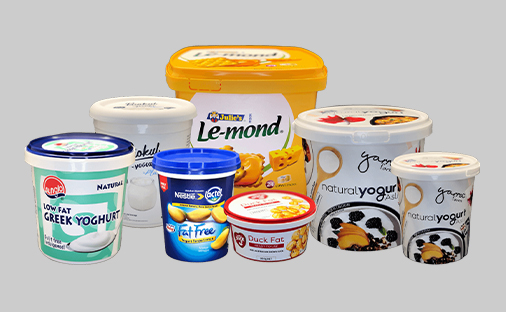Description
IML stands for “In-Mold Labeling.” It is a popular technology used in the packaging and container industry. In-Mold Labeling is a method of decorating or labeling plastic containers during the manufacturing process. Instead of applying labels or printing onto the surface of containers after they are molded, IML integrates the label directly into the container during the molding process.
Here’s how the In-Mold Labeling process typically works:
Label Design: First, a label or graphic design is created. These labels are usually made of a thin, flexible, and durable plastic material that can withstand the molding process and environmental factors.
Label Placement: The labels are placed inside the mold, often with a robotic system, in a precise position.
Molding: The plastic material, usually polypropylene (PP) or polyethylene (PE), is injected into the mold, and it takes the shape of the container while also fusing with the label inside. This fusion occurs because the plastic is still in a semi-liquid state when the label is inserted.
Cooling: The mold is cooled, and the plastic solidifies, permanently sealing the label within the container walls.
The main advantages of IML containers are:
Durability: The label is protected by the plastic, making it resistant to scratches, moisture, and other external factors.
Aesthetic Appeal: IML containers often have a high-quality, professional appearance because the label is an integral part of the container.
Efficiency: It streamlines the production process, as labeling and molding are combined into a single step, reducing labor and time.
Consistency: Since labels are applied during the molding process, positioning and alignment are highly accurate and consistent.
IML technology is commonly used for a variety of plastic containers, including food containers, packaging for cosmetics, household products, and more. It has gained popularity due to its efficiency, cost-effectiveness, and the ability to create attractive and durable packaging.

